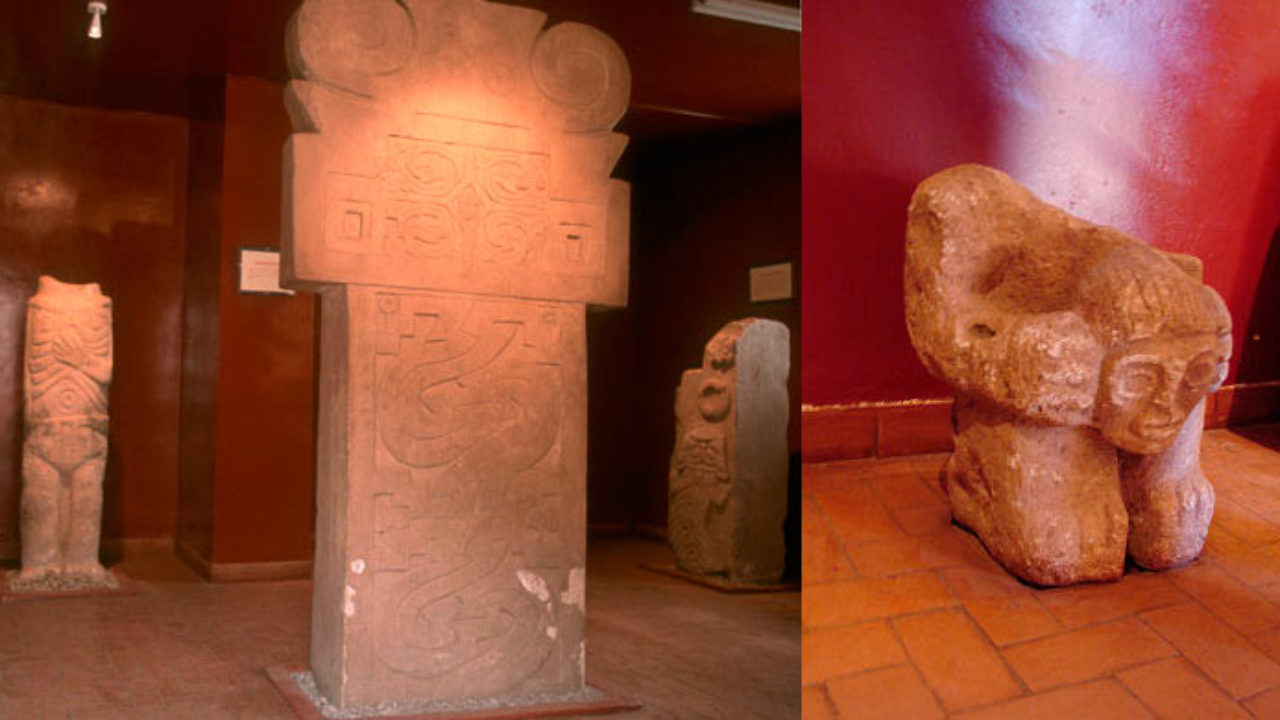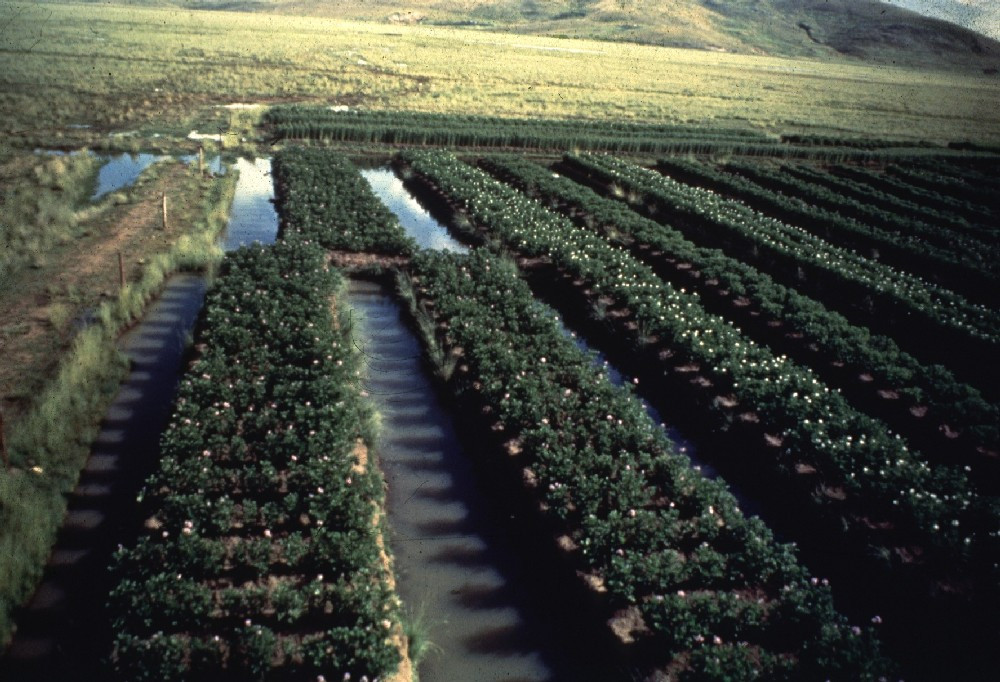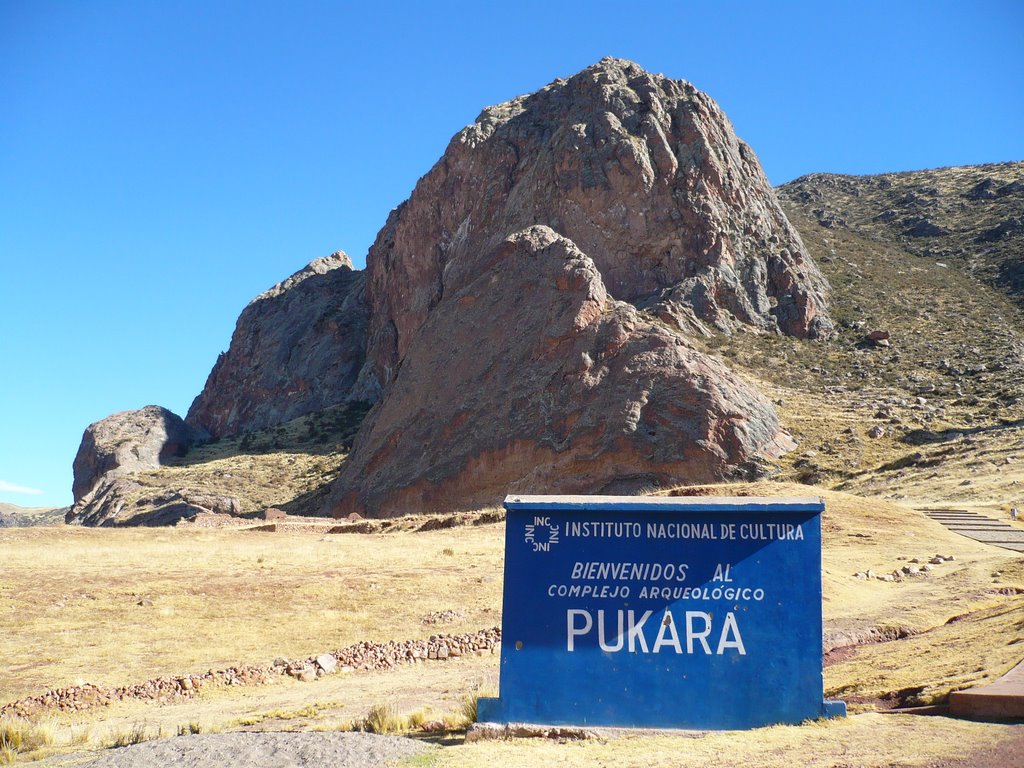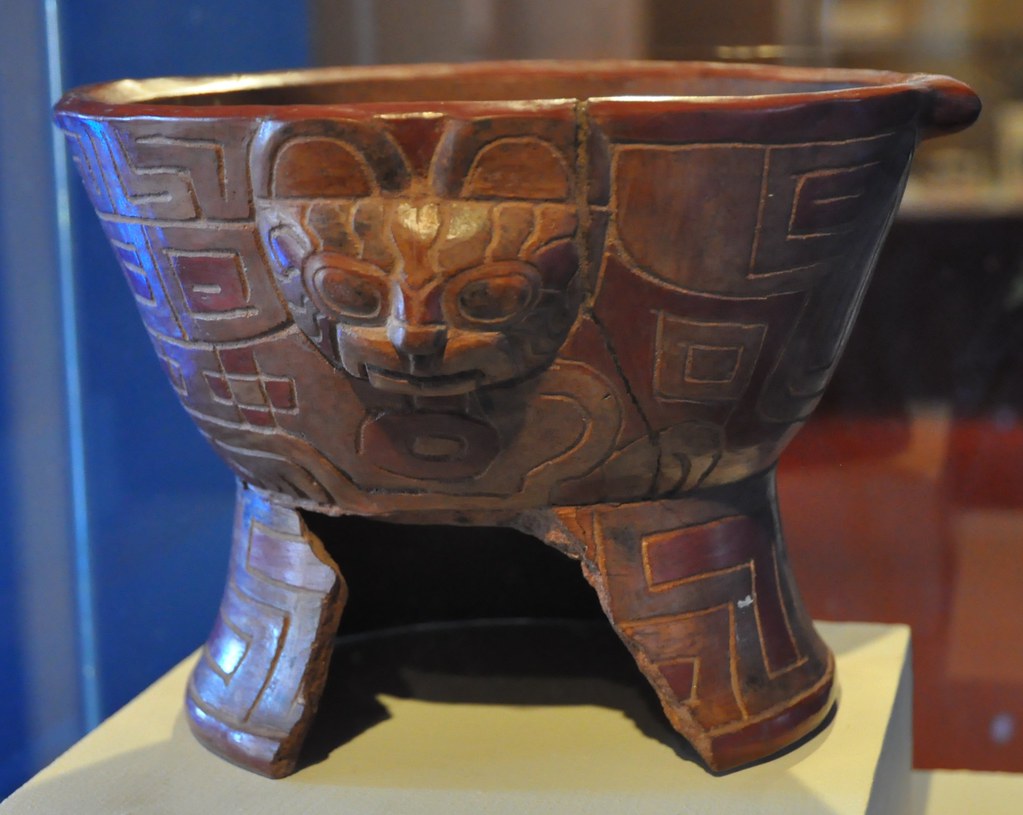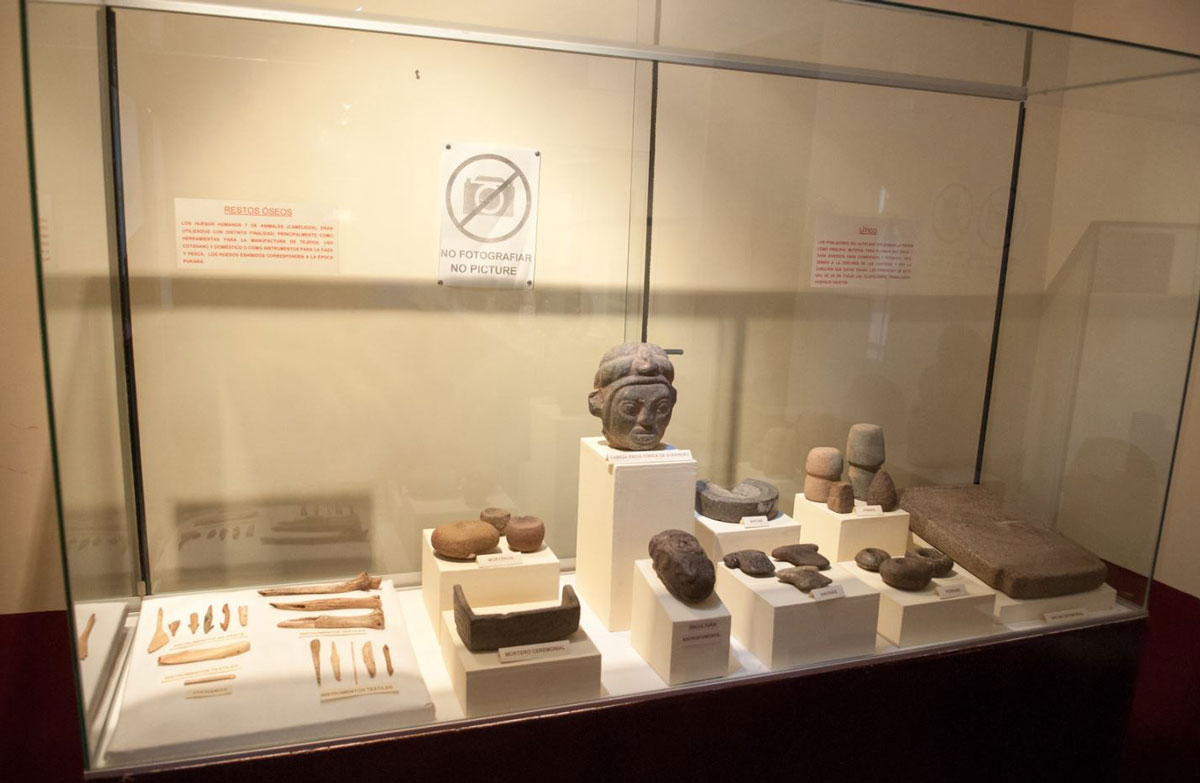In Pucará there was a pre-Inca culture with the same name, dominating a large part of this region. They are famous for their architecture, knowledge in hydraulic engineering and their talent as potters. Discover with us the wonders of Pucara Culture, its archaeological complex, the Kalasaya temple and more!
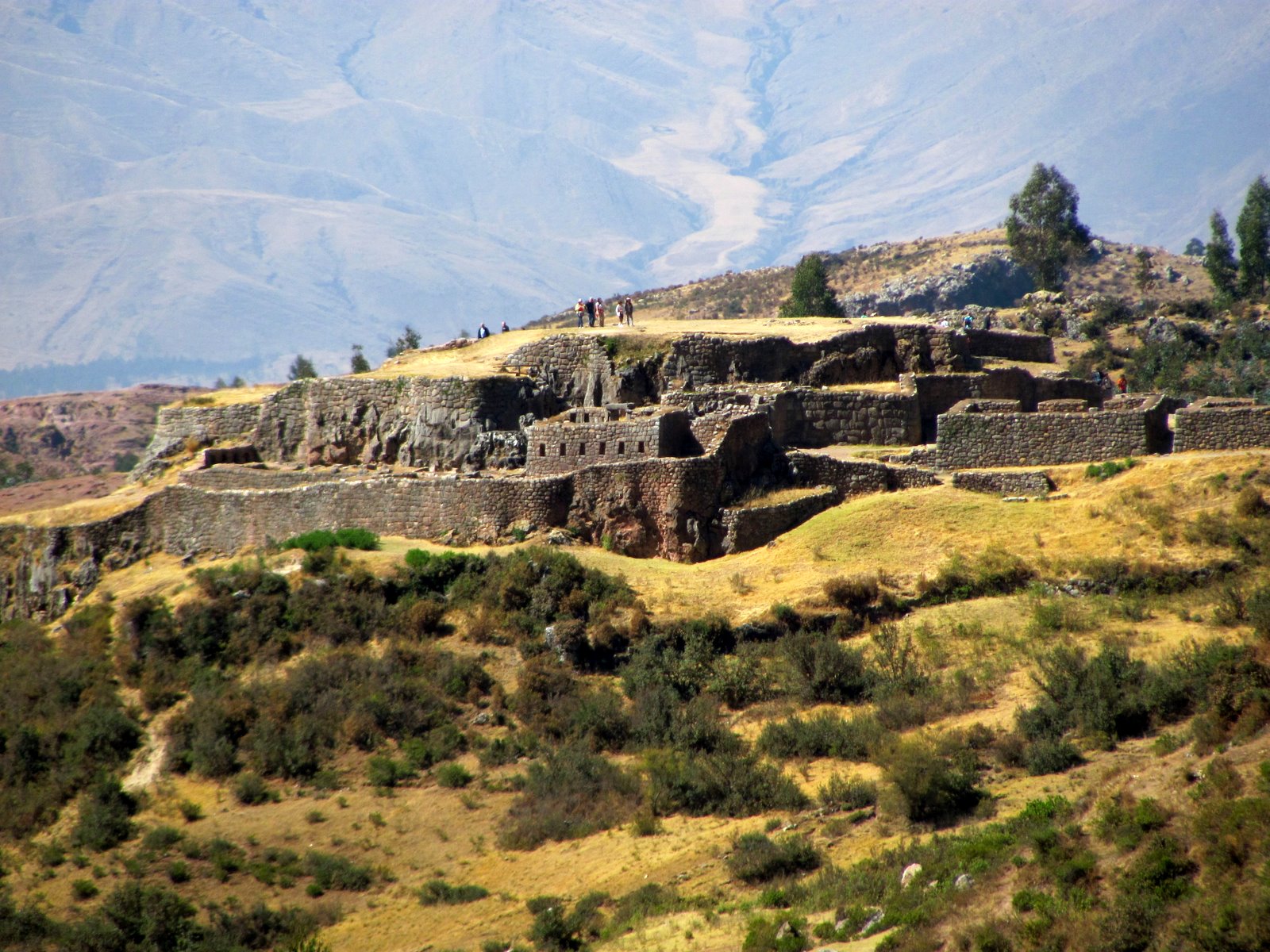
Pucara Culture
Pucará or Pukará, is a pre-Columbian culture in the southern highlands, in the northern basin of Lake Titicaca, department of Puno, Peru. Its main center was known as Pukará, today a great archaeological center.
Known for its unusual horseshoe-shaped temple or stone masonry shrine, stone carvings and pottery, the Pucará are a pre-Inca culture and are considered the forerunners of the classic Tiwanaku styles. Pucará is generally dated between 300 a. C. and 300 d. C., in the Early Intermediate Period.
This culture had great influence in the northern area of Lake Titicaca, incorporating earlier communities from the period Fluke who were among the first civilizations of the Bolivian highlands. The Pucará culture dominated the entire lake region around 200 BC. c.
They generally dedicated themselves to agriculture, grazing and fishing, grouping themselves in small towns and villages, which were governed from their main center.
Currently Pucará is famous for its pottery, especially for the so-called "Toritos" of clay, ideal for prosperity and textiles that can be seen and purchased in the area of the valleys of the middle Andes and the Pacific coast.
Religion
The life of the Pucará society revolved around their religion, with which they had strong roots. Their polytheistic beliefs were associated, as in other indigenous cultures, with natural elements, worshiping various divinities that represented rain, thunder and lightning, fire, water, some species of fauna, among others.
The main deity was the Sun, in his name rituals and ceremonies were organized, sanctuaries were built and sculptures and ceramic pieces were made.
political and social organization
This culture was organized around its religious beliefs, that is, political and social life is based on theocracy, being the priests, the leaders and leaders of the communities. This figure was considered the contact between the divine and the earthly world, that is, they were in charge of mediating between the gods and men.
Regarding the organization of their communities and settlements, it was strictly hierarchical and was closely associated with the economic aspect, separated into three levels:
- First level
Located at the top and related to the leaders and directors, the impressive urban center where ceremonies, rituals and decisions were made were performed, it was also the place where all resources and production were managed.
- Second level
Known as secondary centers, they had less impressive constructions than the first level, but it was refined and elaborated, it is presumed that they had administrative and product redistribution tasks.
It is presumed that these secondary centers were directed by an elite or organized social class, with a certain power that allowed them to direct the elaboration of everything related to the ceremonial centers and the artifacts and resources that are required for rituals and priestly leaders. In addition to the realization of the different monoliths and stelae.
Also taking care of the lower classes, who were the main agricultural and pastoral producers, who need to be controlled and supervised, but for this hard work it is possible that they had people at their service, therefore they were a class with the power to direct, in addition to obviously purchasing power.
- Third level
Scattered, less elaborate and showy constructions can be seen at this level, it is considered the settlement of the commoner and working class,
Settlements that were no more than small villages near water sources and areas where obtaining raw material was the priority. They were characterized by being small communities or scattered towns, where food was produced and the raw material for the products was obtained. different products that the Pucara society requires.
Economy of the Pucará culture
It is considered that the Pucará culture was one of the first to settle and dominate the Andean zone, and had to adapt to a complicated environment, since the ruins of its settlements are located between 3000 and 3500 meters above sea level. Therefore, their economic activities are definitely a sample of the versatility and creativity of these communities, let's learn a little more about them:
Agriculture
The location of the settlements makes planting very difficult, however the pucarás implemented varied and innovative techniques that allowed them to develop agriculture and maintain sustained production, making this activity the basis of their economy.
It is presumed that the use of ridges was a distinctive technique of the Pucará culture, which made it possible to plant the floodplains in the vicinity of Lake Titicaca. The ridges consist of digging furrows or channels that connect with each other and with the extracted earth, make small elevated terraces that allow sowing.
The water that accumulates in the channels rises by capillarity to these elevations and the roots, in an attempt to obtain it, grow downwards. It is an excellent technique when the land is usually flooded and it also allows plants to be planted very close to each other.
The products that they planted more frequently and in greater quantity, destined to feed their community, were: potatoes, cañihua or kañiwa, olluco and quinoa.
A technique known as Qocha was also developed, which consists of digging deep depressions in the surface of the ground, generally circular, however it was not a norm. The dimensions of these perforations could vary between thirty and two hundred meters in diameter and between two and six meters deep, generally the earth was piled up around the sinking.
This type of structure could be isolated or interconnected with similar ones and was used as a rainwater reservoir, its name is usually associated with lagoons.
In times of water scarcity or excessive rain they were useful, because in the first it was used to distribute crops and communities, on the contrary, in the second, in times of excessive rain they helped to prevent flooding of the land. Canal systems were also installed to drain excess water.
However, they not only functioned as deposits of this vital liquid, since in the earth extracted and stacked on the edge of the great hole, bitter potatoes, quinoa and kañihua could be planted in winter, since the constant presence of water in the Qocha allowed it to survive frost.
It was a quite ingenious system that allowed the Pucara communities to take advantage of land far from Lake Titicaca, since by keeping water for irrigation, they could plant crops almost anywhere in the highlands.
The platforms also known as Pata Pata, is a technique that consists of modifying the shape and structure of the land by building retaining walls on the slopes of the mountains, which allows the creation of terraces where various products can be grown.
The fill between the wall and the slope of the hill is made with gravel or small stone at the bottom and an upper layer of earth. In some cases, two walls are made to give stability to the terrace when the slope of the hillside is very steep or when the area has a lot of rainfall.
This technique developed by the pucarás allowed them to expand their productive space much more, that is, they could improvise cultivation spaces that had diverse and very important benefits apart from food production.
With the use of the Pata pata, the erosion of the mountains is avoided in the area of the slopes that are usually very prone to this, these spaces are more resistant to inclement weather, especially frost and also take advantage of too much the rainfall.
Animal husbandry
The Pukara developed in the Altiplano a livestock area that favored their economy, they domesticated and raised llamas and alpacas, being a traditional activity that was maintained for the following centuries.
The activity of grazing was very common, being embodied in paintings and petroglyphs of the time. In classical ceramics, scenes of human figures directing herds of alpacas is another proof of the practice of this activity in the Altiplano area.
It is presumed that these herds spread across the Altiplano to the vicinity of the crops, maintaining permanently humid spaces known as bofedales, whether natural or artificial with water from the melting zones near the snow-capped mountains, for the welfare of the animals.
These animals represent one of the main sources of food for the Pucara society. In addition to the fact that its soft and warm wool was the main raw material for many textiles, products of frequent exchange with other societies in the region.
Stores
The Pucará society in its different facets and stages maintained a constant commercial exchange within the area of the Altiplano and with other communities of the Andean South, an affirmation that can be supported by a large number of objects of the Pucará culture in places and centers quite far from their place of origin. origin.
This constant commercial exchange allowed the Pucará society to learn about and access other foreign styles and techniques such as those of Cusco, Ica, etc.
Manifestations artistic
The Pucará culture stood out for some artistic manifestations that they developed with intelligence, creativity and majesty, such as architecture and ceramics. However, they also ventured into sculpture and textiles. Let us know some interesting aspects of these artistic manifestations:
Architecture
An archaeological complex emerged in the southern highlands, made up of large urban and ceremonial centers near the shores of Lake Titicaca, in Pucará.
Known as Pukará, in which two zones can be distinguished, a ceremonial area with nine pyramids that look like terraces and an urban center. The pyramids of the ceremonial center cover a little more than four square kilometers and are all different in design and size.
However, the one that stands out the most is the Kalasaya Pyramid, which is three hundred meters long, one hundred and fifty meters wide and thirty meters high, made up of a kind of superimposed terraces that are joined by a staircase decorated with stelae and sculptures, mostly carved in the stones of it.
Pukará has a very well built horseshoe-shaped sanctuary, concentric red sandstone walls enclosing a slightly sunken terrace, this one lined with white sandstone slabs.
Within the terrace is a sunken patio about fifty feet square and seven feet below the surface, clad entirely in white sandstone and accessed by a stairway.
This patio contains two funerary chambers covered in stone and the outer wall has small chambers, with slabs that serve as an altar, stone statues of short men, with trophies and stelae, a type of stone sheet that is usually sculpted in vertical position, with geometric shapes and vipers.
Ceramics
Pucará pottery was quite advanced at the time, they were skilled potters who made vessels, tall bowls and micaceous vessels in reddish beige clay and which are generally painted in red, black and yellow. Ancient pieces similar to musical instruments, such as trumpets, have also been found.
The reasons for decorating ceramics are usually feline, mainly cats, birds, camelids, human heads, human figures with scepters in their hands and geometric figures, some also made by incisions.
The faces are frequent, the eyes being the central point of the same, they are painted half black and the other half the natural color of the crockery.
The pottery of this culture is different from others from the same period, as its materials and techniques are quite particular.
The pieces were made in a mixture of clay that they take from their environment, then sift it and combine it with ground stone or sand, in the necessary proportions to achieve the required texture, thickness and color and in some cases a glazed effect. .
The old Pukará stage is characterized by masses or mixtures of clay in very intense reddish and brown tones that would take the form of plates, vessels, cups and other containers with lines, grooves and very fine cuts, which were later painted in yellow, black, gray and Red.
The pieces are generally made for ceremonial and religious purposes, a situation that is repeated with sculpture. However, not all of them were utilitarian, some were simple statues or figures of small size, of humans or wildlife.
monoliths
This culture produced a large number of representations carved in stone, very diverse and impressive, which can be like a sculpture or like the engravings they make on flat surfaces.
The stone carvings are basically realistic figures of animals and human beings or fantastic or mythical figures, which bear no resemblance to any real being and are presumed to be associated with their mythology.
Some designs include geometric figures and symbolic elements, which are related to the ideology and religion of the Pucara culture. Currently many of these monoliths can be seen in:
- Pucará Site Museum
- Municipal Museum of Taraco
- Dreyer Museum of Puno
- Inka Museum of the San Antonio Abad National University of Cusco
- National Museum of Anthropology and Archeology of Pueblo Libre in Lima.
In our blog there are very interesting articles that may be to your liking, we invite you to consult them:
